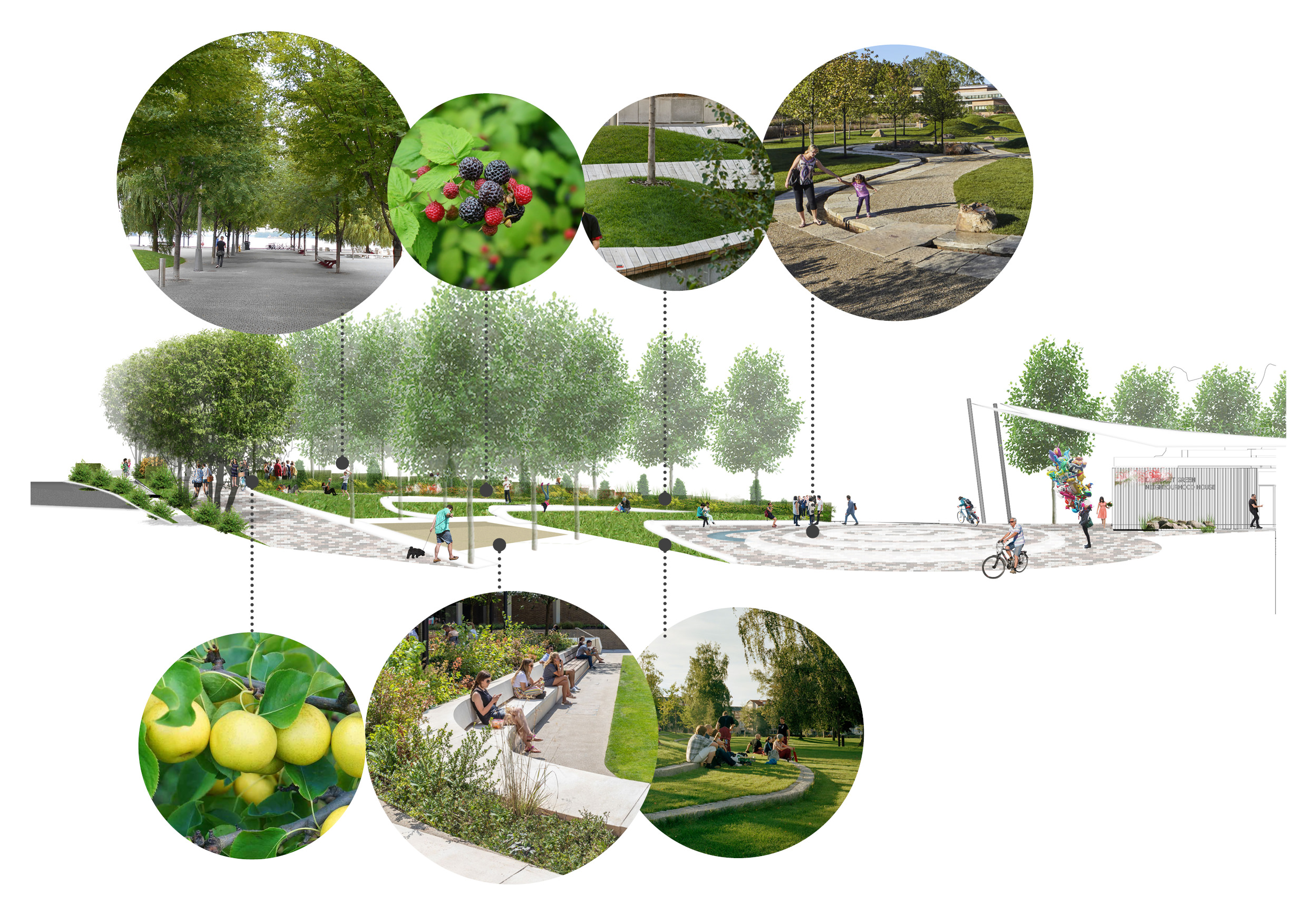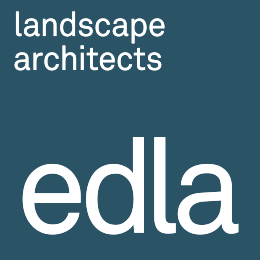
The public realm should be the forefront of tackling the climate emergency
EDLA Director, Donald Roberts talks about how once public realm is understood as a conduit for humankind’s interaction with nature, it can be put at the forefront of climate action in our cities and towns.
The government is aiming for UK net zero emissions by 2050, and landscape architecture will play a pivotal role in achieving this ambitious target. This ambition will require not only short-term design solutions but long-term design response that will challenge current landscape design aesthetics and approaches. This will alter how public realm is designed and ultimately impact all aspects of our lives, from what how and what we choose to eat, how we travel and how we expand and maintain the cities that we live and work in.
Cities will undoubtedly be at the forefront of climate action and the transition to a carbon-free economy in the UK and beyond. Currently cities account for around 76 percent of the world’s carbon emissions and 75 percent of total global energy consumption, meaning that they have the most to gain from cleaner energy and a greater responsibility to act now, galvanising the change needed.
One such pioneering scheme is the central London Ultra Low Emissions Zone (ULEZ) scheme, which was launched in 2019. The ULEZ to improve Londoners’ health by cleaning up the capital’s toxic air, by requiring all drivers (commuters or residents) to meet strict emissions standards or pay a daily charge of £12.50. The scheme is set to be expanded later this month (October 21) to cover a single larger zone.
One year on the impact has been significant, with ‘65.3% of Londoners changing their mode of transport’, according to a recent survey. The biggest shift was seen with people using a bike or walking. The expansion of the scheme will only lead to more people having to find a sustainable way to get where they are going.
Within the built environment Landscape Architects can allow these changes to be facilitated easier by creating spaces conducive to sustainable travel. We can plan and design urban, walkable communities that reduce emissions from transportation. And through the beauty of the spaces, naturally encourage urban people to adapt a greener mindset.
We are well equipped and qualified to solve design problems with the tools of nature and have the advantage of being able to synthesise nature into urban environments. Good urban design is capable of blending the built into the natural environment, creating cleaner, more habitable cities.
Landscape Architecture provides the greatest benefit to public realm, by designing with adaptation and mitigation in mind. By designing and responding at both global and local scales, Landscape Architects can consider natural processes, such as the movement of water, groundwater, soil, habitats, animals and the increasing effect of climate change on each.
We have the skills to make the built environment more energy and carbon efficient with strategies like green roofs, water-efficient design, and use of sustainable materials and construction practices.
At EDLA, we are committed to developing landscape proposals that are integrated into a wider framework of public spaces.
One such scheme is the Neighbourhood Green project within the wider Ebbsfleet Garden City. A colossal, visionary and benchmark placemaking project on the banks of the River Thames in Kent. Ebbsfleet will offer a green and healthy place for up to 30,000 people to live, work and play, with plans for over 15,000 high quality new homes.
Landscape Architects are already playing their part in this climate emergency, what we need now is for everyone else to catch up.
ETLA was the chosen Landscape Architectural practice to prepare the landscape and public realm strategy for the ‘Neighbourhood Green Community Hub’. An important public space and the central communal space for the increasing number of residents in the area.
It important that the space could facilitate and be of interest to all people, of all backgrounds, abilities and ages. The underlying principles for the project centred around the integrity and balance of the quality of life (especially in light of the new covid patterns) and the quality of the natural environment.
Public realm should always be designed to contribute to the overall character of the development. As we proposed with Ebbsfleet Green, our designs integrated within the context of the surrounding developments, to create a lively, diverse and safe series of places where people will want to visit, stay and grow in.
Some of the key aspects of our strategy included integrating the Ebbsfleet healthy Newtown concepts, which include ‘improved health outcomes, better housing, education, employment and environmental opportunities environment’ for all which we encapsulated in semi-sheltered spaces with dense tree canopies for a parent to wait while they collect their children and open space for events. And the edible Ebbsfleet concept, which we embraced by conceptualising fruiting trees and shrubs for children forage on their way to school.
All of which considered sustainable design approaches in order for the development to target a Breamm excellent rating.
Once the public realm is understood as a conduit for humankind’s interaction with nature, it is put at the forefront of climate action in our cities and towns.
It has been a longstanding concept in architecture and planning that cities, like humans, are living, breathing entities. In practice this is achieved by creating green corridors that link together existing external spaces, people and biodiversity.
Using landscape architecture to create an urban mosaic of habitats and typologies, public realm can be reimagined. Dense planting and urban forests offer essential sources of carbon capture, while storm management systems can be used to recapture water’s historic role within cities.
Landscape Architects are already playing their part in this climate emergency, what we need now is for everyone else to catch up.
A version of this article was first published in the Architects Journal in 2018
